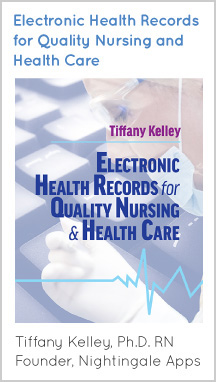Earlier this week, I was a patient in need of my annual physical exam. Every time I visit a health care facility as a patient, I gain new perspectives on what I saw, how it made me feel, and identify the broader healthcare implications. I can say that the overall experience was quite positive (despite some administrative frustrations to obtain a referral). My Primary Care Physician, PCP, treated me like a person, not box to check. Yet, I am also just one of many patients seen out of a large population.
As the PCP entered the room, she greeted me, ‘Hi Tiffany, how are you since I saw you last. You were feeling a bit tired at that time?’ She made eye contact, took the time to look back at my chart, followed up on the reason for that visit, and then listened to my response to her question. We talked for 15 to 20 minutes while she listened to me discuss my health in relation to nutrition, exercise, stress, work, personal life, etc.
In that visit, I could feel myself communicating a large volume of structured and unstructured data all mixed together in my spoken word. My PCP saw a picture of me as a patient. I gave her my story at that point in time. This would not have been possible from a series of extracted structured data points.
For example, I am a 30 (something) female with no known allergies, no current or prior health conditions, no active medications, non-smoker, exercise regularly with moderate stress levels, stable vital signs, and labs within normal ranges. If I was the PCP, I would have no context to know the patient as an individual person from these details. Yet, every day these types of information about individual patients are entered into the EHR in several different structured data fields. Just think about the challenge in extracting these data elements and then piecing them together like a puzzle (those of you that do this every day already know the challenge).
So why does this all matter? Well, in my day-to-day work as an informaticist, I think about data and information endlessly in the context of healthcare. I think about what data and information are needed for care, how the data should and can be represented, organized and accessed for use by nurses, doctors, and other health care individuals. I also think about what aggregate level data is needed to view the health status of entire patient populations. We are working to impact the daily patient care of individual lives as well as the long-term lives of patient populations at the same time. This is where we, in healthcare, have a challenge: ensuring our health care teams have access to the right data, in the right form, at the right time, for the right level of care (e.g., individual patient care versus population based care management).
As a nurse, what I need to know about my individual patient requires context. Context allows me as a nurse to individualize and personalize how I care for that patient. Context allows me to form a relationship with that patient. Thus, we must not lose the ability to obtain context which often comes in verbose verbal communication between the patient and the health care professional. We must also be encouraged to provide that context in a narrative or unstructured form for the purposes of daily care management across the health care team.
To manage populations of patients, we need structured data about each patient that is measured and documented in a consistent manner. The variables (e.g., data points) are often based on established clinical guidelines. Then, the data is aggregated and evaluated for the desired outcome. Context is not as relevant as the consistency and availability of essential data at this level of care. Thus, structured data fields become the foundation for population level management.
So, we need both forms of data: structured and unstructured. We must also keep in mind that patients are the primary sources of information for care delivery. As a patient, I do not think in terms of check boxes. I think in terms of my story. Patients tend to tell a story that needs to be digested by the PCP, nurse, and other health care professionals. That story must be captured, in addition to breaking it down into data that can be later used for aggregate level analysis and findings. Patients are generally not aware of the complexity in managing this data. However, patients are aware when they feel as though they are not heard, seen or known as an individual person by their health care professionals.
Best,
Tiffany



